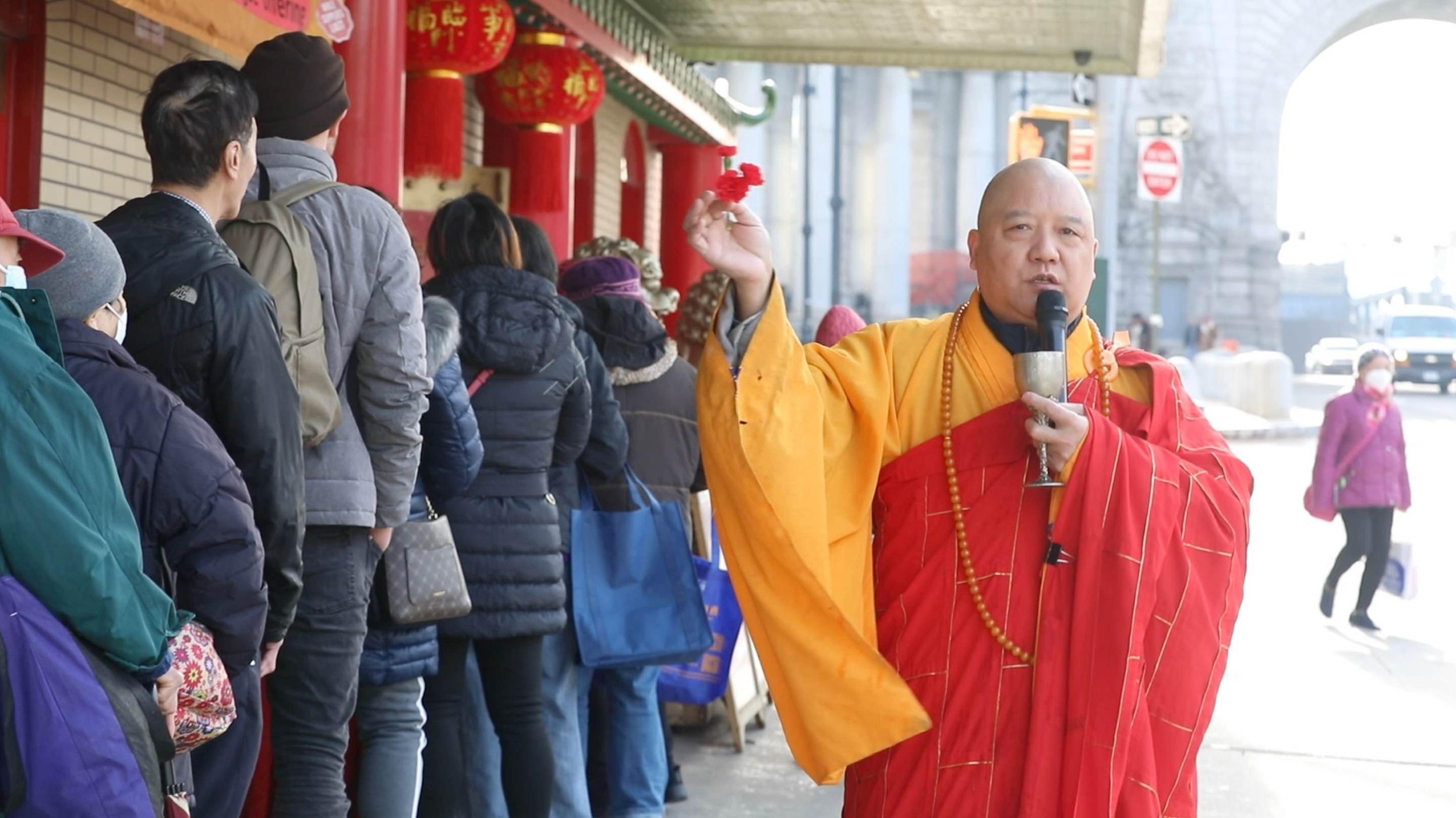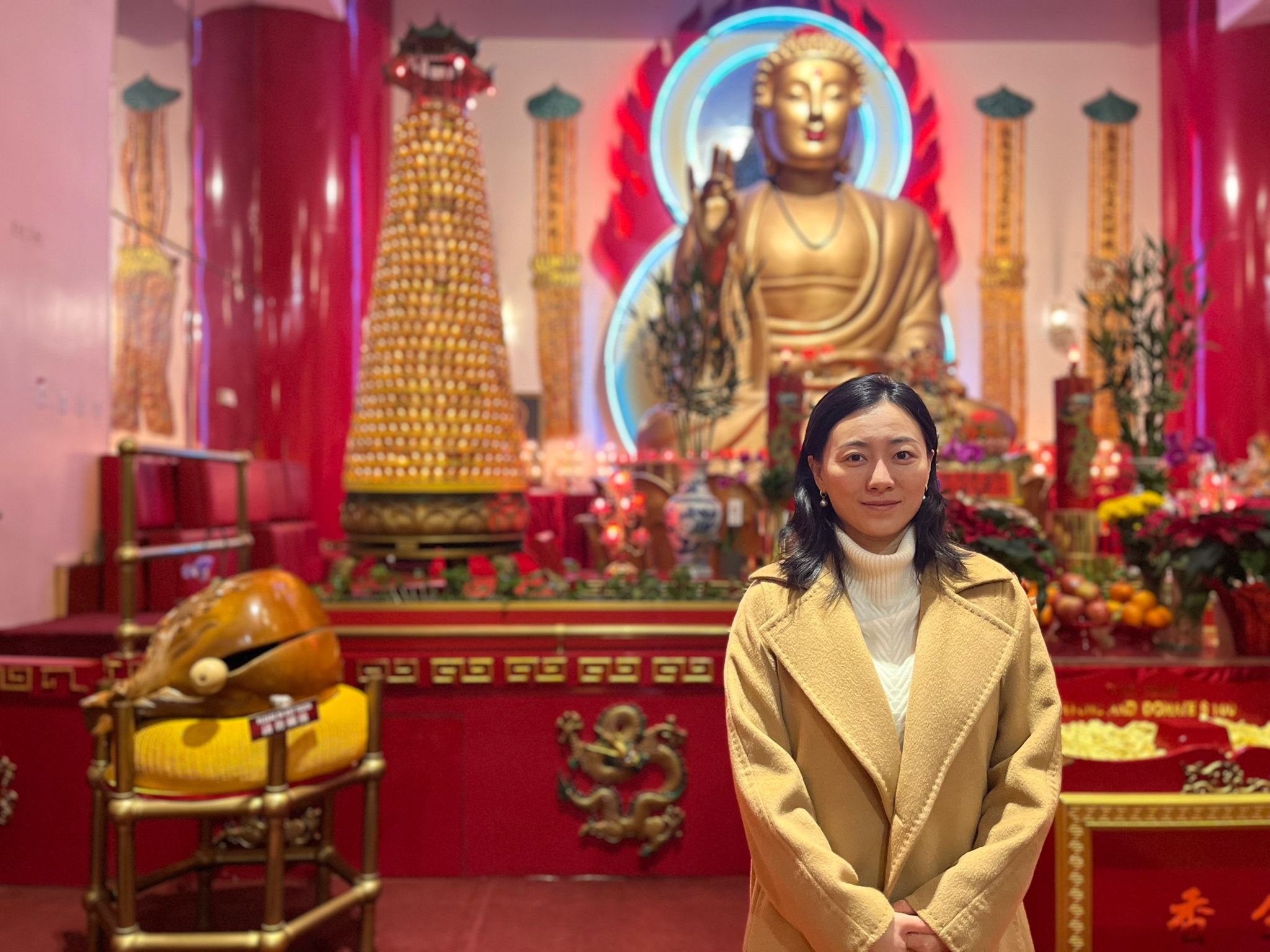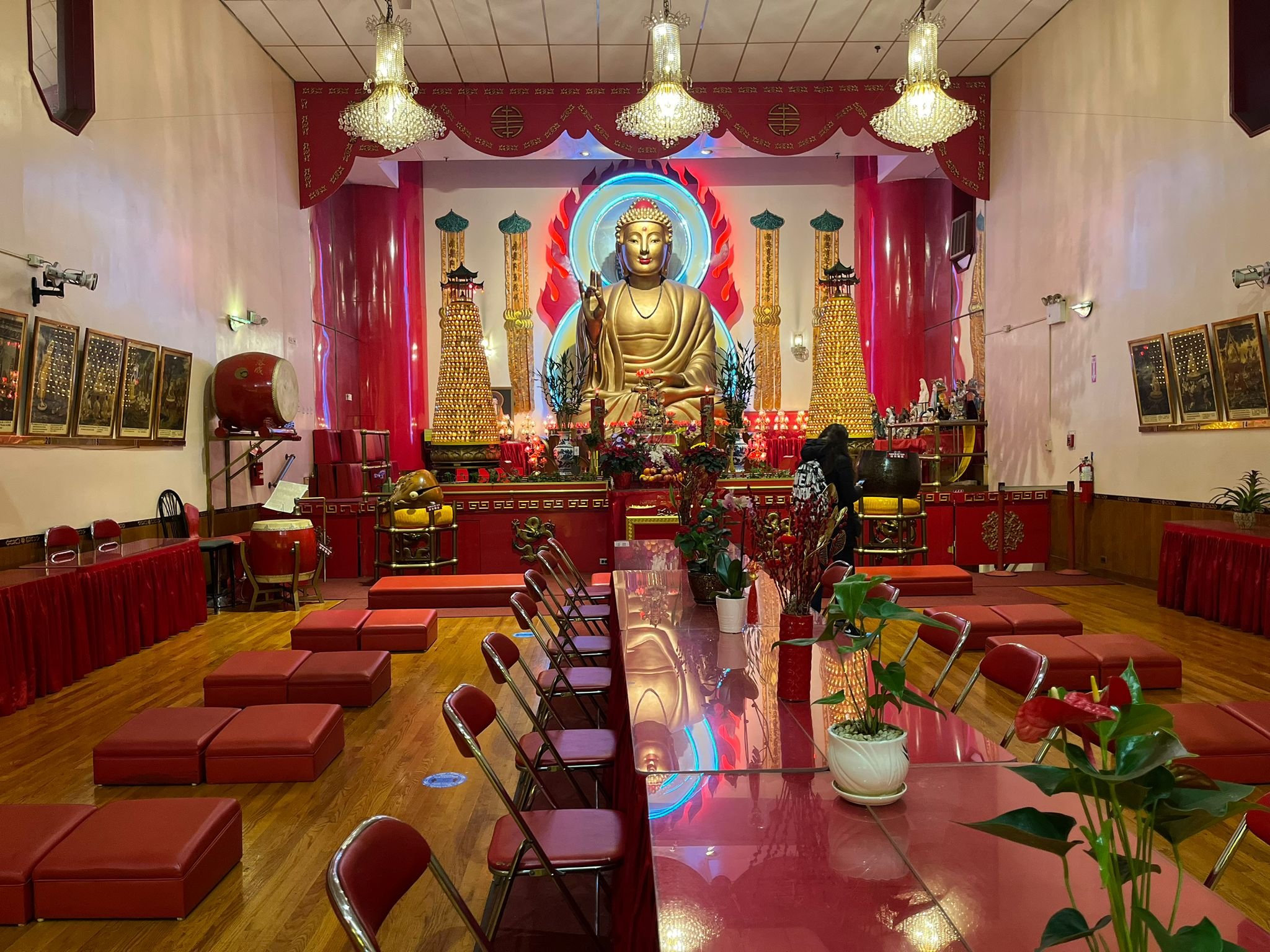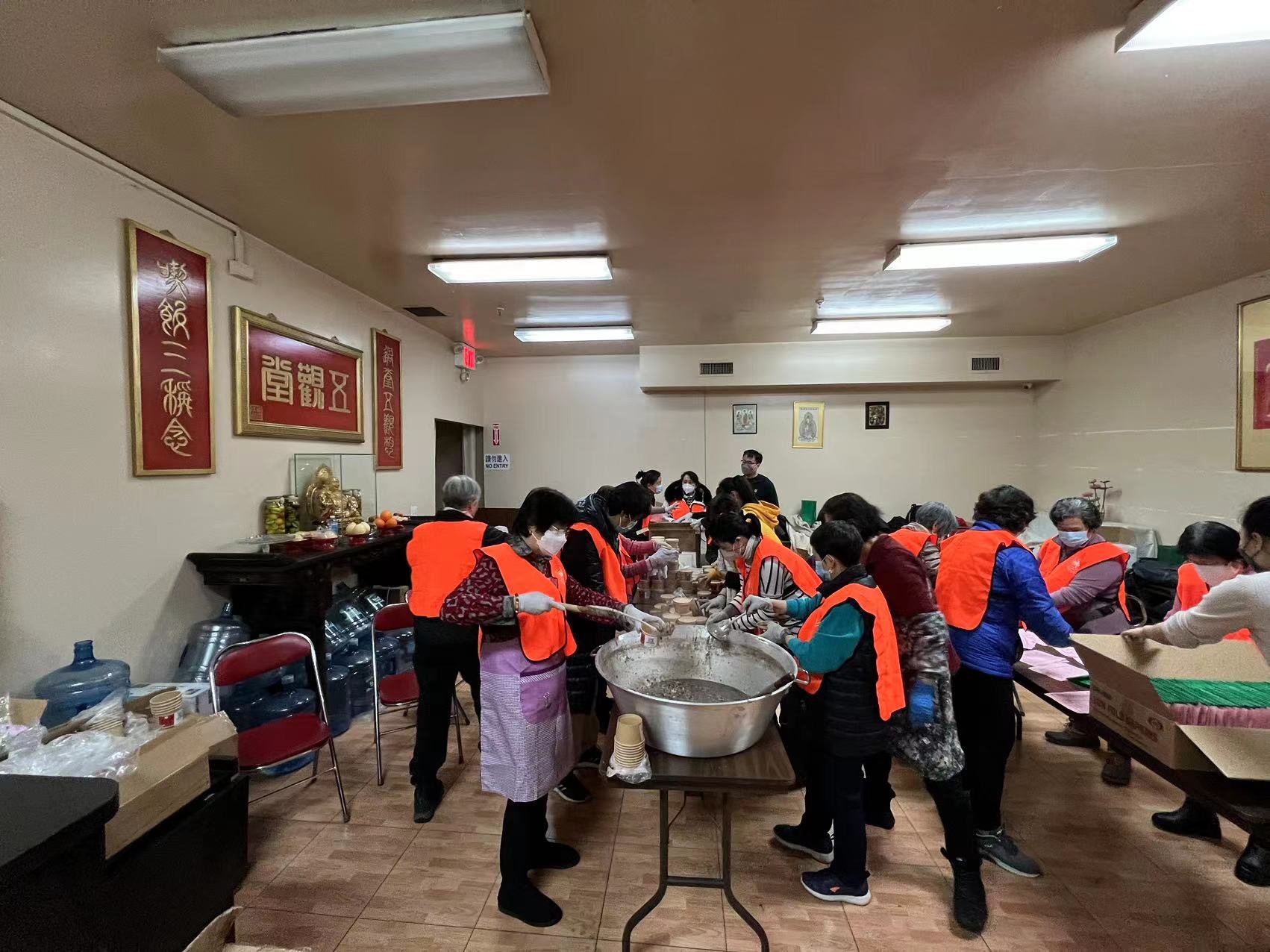Distributing Buddha’s Congee Thousands Of Miles From Home
NEW YORK — Every year in mid-January, Livia Gao arrives at Mahayana Buddhist Temple in New York’s Chinatown at dawn to prepare 2,000 batches of congee, a soupy rice mixture, for the community.
About 30 volunteers join her, peeling longan skin, boiling coconut milk with white sticky rice and organizing red beans, green beans, dates and lotus seeds to add for additional flavor.
When a sweetness fills the air signaling that the congee is done, the team wanders to the main hall to join a line of monks who begin the day’s service with a variety of sutra prayers, followed by a series of chants. As the prayers come to an end, the attendees then pack the congee and distribute it to senior centers and passersby on Canal street.
READ: Religion And National Identity Linked In Southeast Asian Countries
This special service is held each year, and is more commonly known as the “Laba Festival” by Mahayana Chinese Buddhists. “Laba,” which translates to 12 (“La”) and eight (“ba”) is named as such as the festival falls on the 8th day of the 12th lunar month, typically three weeks before Lunar New Year. It usually falls on Jan. 18 on the Gregorian Calendar. The day is one of the most important for Chinese Buddhists as it is considered the day that Buddha achieved enlightenment.
According to various historical accounts, Buddha achieved enlightenment while sitting for several days under a Pipal tree in what is now modern day India. It is believed by many that a young girl who was passing through handed him a bowl of rice pudding, which was the last thing he ate before achieving enlightenment.
This is why Buddhists prepare during Laba, a way to commemorate the shepherdess who offered Buddha rice pudding that enabled him to achieve enlightenment. Eight, which is a lucky number in Chinese culture, is a central number during the festival. Thus, the congee made is prepared with eight or more ingredients to bring in good luck. For Mahayana Buddhists, distributing “Buddha’s congee” or “Laba congee” is a way to bring happiness, luck and good health to the public.
“This act also helps us as Buddhists practice grace and generosity,” Gao said.
While the modern-day Laba festival is connected to Buddhism, the festival itself existed long before Buddhism came to China. In its original form, folks would pray for good fortune, health and a good harvest by making sacrifices to the gods a few weeks before the new year.
When Buddhism arrived in China in the first century, locals switched the offerings to congee, and used the festival as a way to commemorate Buddha. This is why the Laba Festival is typically only celebrated in China and by Chinese Buddhists in other areas of the world.
Buddhism, the world’s fourth largest religion, originated in modern day South Asia, and the teachings of Buddha are central to the religion. Buddha, who was born as Siddhartha Gautama, was a child of a royal family from the Shakya Clan. Miraculous circumstances surrounded his birth and early life. Gautama’s mother was said to have given birth to him standing up while leaning against a tree.
Moments after he was born, it was noted that he proceeded to take seven steps. Astrologers also predicted he would be a great king or religious teacher. His father, who feared that Gautama would choose the path of religious teachings if exposed to the ails of the world, isolated him from the outside world for as long as he could.
At age 29, Gautama ventured out of the palace grounds three consecutive times, encountering an elderly person, a corpse and an ill person for the first time. The fourth time he ventured out, he encountered an older holy man, whose way of life inspired Gautama to leave home and pursue a life of spirituality. He spent years as an ascetic, and fasted intensely before attaining enlightenment. He then shared his learnings, encouraging folks to pursue “The Middle Way,” which emphasizes a life of balance.
There are four tenents central to Buddhism, known as the “Four Noble Truths.” They are the truth of suffering, the truth of the cause of suffering, the truth of the end of suffering and the truth of the path that leads to the end of suffering. In essence, these tenents emphasize one principle: That while suffering exists, there is a way to its end. Buddhism also recognizes that happiness is present, but that it is fleeting. There are several schools of Buddhism which currently exist such as Theravada, Mahayana and Vajrayana, but the four noble truths are central in these variations of Buddhism.
Mahayana Buddhism is the most common form of the religion practiced in China and other East Asian countries. It differs from other schools as it accepts both early Buddhist teachings and other doctrines that other schools don’t. For instance, Mahayana Buddhists believe that anyone can aspire to achieve Buddha’s awakening and become a bodhisattva (one who is one the path to becoming a Buddha). Other schools of thought believe that Buddha is the only bodhisattva that can exist.
There are currently three Mahayana Buddhist temples in the greater New York area, with two of them sitting in the city. The original temple, on Mott street in Chinatown, opened in 1962. The largest of the three sits on Canal Street, and opened to the public in 1997.
Outside the red pillars is where Gao and several volunteers man a booth to hand out around a 1,000 congee boxes to passerbyers during the Laba festival. The other 1,000 are sent to senior homes in the neighborhood.
Gao, who has organized the festival in New York for the last four years, grew up as a Mahayana Buddhist in China before moving to the United States. The festival was only open to the Buddhist community during COVID, but reopened to the public last year. Every year, the congee runs out before the day is over.
“It’s nice to see so many people celebrating with us and enjoying this gift,” Gao said.
Heerea Kaur Rikhraj is a New York-based journalist who covers religion, health, Indigenous and foreign affairs. She is currently an intern for New Mexico in Depth.






